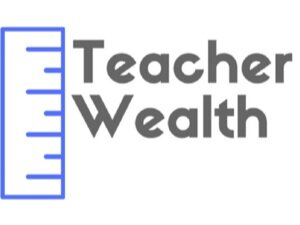What Should I Do If I’m on SAVE Given that Interest Will Begin Accruing August 1st?
On July 9th, the Department of Education announced that loans on the SAVE repayment plan will begin accruing interest starting August 1, 2025.
If you are on the SAVE plan, what should you do now?
NOTE: History shows that student rules change often. This information is up to date as of July 29, 2025. Things may have changed, especially if you are reading this a long time from the date this was written.
Back up:
In response to a federal court injunction regarding the legal status of the SAVE plan, the Department of Education took the following TEMPORARY actions July 2024 until the legal system provided more clarity:
Placed a pause on payment requirements for the SAVE plan.
Paused interest from accruing on those loans.
This allowed borrowers to not be negatively impacted while the situation was in limbo. One important item of note is that the months on this administration forbearance DO NOT count toward forgiveness credits for income driven plan and/or PSLF.
Then on July 4, 2025, President Trump signed the One Big Beautiful Bill Act (OBBBA) which essentially will drop SAVE as a repayment plan option.
The current situation:
Those sitting in SAVE forbearance need to understand the following:
SAVE forbearance is not going away on August 1st. But, at some point, people will be kicked out of the SAVE plan and be placed in another income-driven plan. (We don’t know when.)
If you stay on SAVE forbearance:
You still will not have a monthly loan payment.
Months will still not count towards any forgiveness credit.
Beginning August 1, 2025 interest will accrue on your loan balance causing your loans balance to increase.
Option 1: Stay on SAVE forbearance
Those who would have trouble paying a monthly student loan payment on another repayment plan may consider staying on SAVE until they either get kicked out of SAVE or can improve their cash flow situation in order to pay their payments.
Because nobody knows when SAVE will go away, it would be wise for these borrowers to work to figure out their cash flow situation sooner rather than later.
For some borrowers, the forgiveness path will no longer make sense because SAVE allowed for a lower monthly payment than all other repayment options. Now that SAVE is going away, they may be better off changing their strategy to paying off their loans as fast as possible.
There will probably be a few situations where people may benefit from staying on SAVE forbearance with zero payments until they have to refinance their loans to a private institution. This benefit will need to be compared to the cost of having interest accruing on their loans.
Option 2: Move to another repayment plan
There are other income-driven repayment options available. Although, options will soon dwindle to two or three options. Currently there are 5 income-driven options, but the One Big Beautiful Bill gave us at least some clarity on the future of each. :
ICR - Going away soon.
IBR (old) - Stays. Will be an option.
IBR (new) - Stays. Will be an option.
PAYE - Will be an option for some but will be going away in 2028. (If not sooner.)
SAVE - Going away soon.
RAP - This is the new repayment plan the Republicans added. It will be an option.
For many teachers, who are on the PSLF forgiveness track, the problem with staying on SAVE is that you are not gaining any credit toward your 120 payment forgiveness requirement. So, many would benefit from going on another plan to work towards that forgiveness.
If you are in this situation, which plan should you go on?
RAP - This hasn’t started yet. There will be some borrowers with low incomes where this could make sense. Especially if you are not married or don’t have children. You can always go on another repayment plan now and then switch to this one later if it makes sense. If you are not going for PSLF this will likely not be better. But comparing to make sure is always a good idea.
IBR (new) - If your first student loan was AFTER July 1, 2014, you are eligible for this plan and then it will likely be your best option.
PAYE - For borrowers who’s first loan was AFTER October 2007, but before July 2014, this may be best for you because you are only eligible for the IBR (old) repayment plan. Your payment will be based on 10% of your discretionary income instead of 15% if you were to go on IBR. Unfortunately, you will eventually have to switch to IBR (or RAP) and the higher payment. But, this may not be until 2028, so that can make a big difference in how much you pay in payments during that time.
IBR (old) - If your first loan was before October 2007, your only option right now is this plan.
A word of caution
As I noted above, things are always changing with student loans. What is best today may not be best in a year from now, or even sooner..
We will get more guidance on what the One Big Beautiful Bill means in practice for disputed language, lawsuits will be ruled on (or added), and new legislation can be passed.
Student loans decisions are still complicated and will likely stay that way. It is wise for borrowers to reassess how these recent changes may have affected their student loan situation and what to do now.
If you need help reviewing your situation, Teacher Wealth can help.
